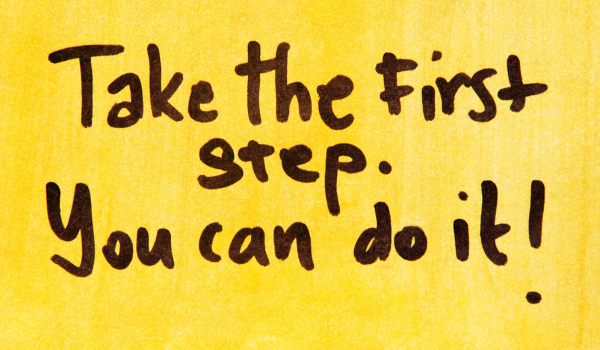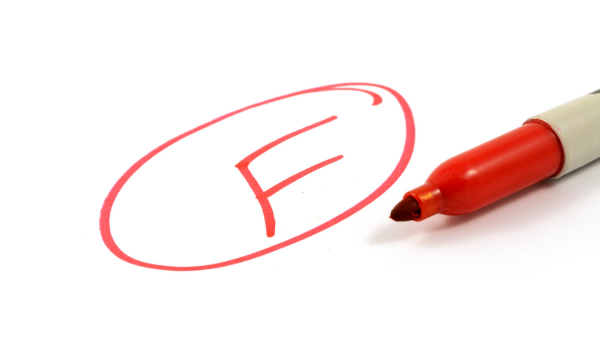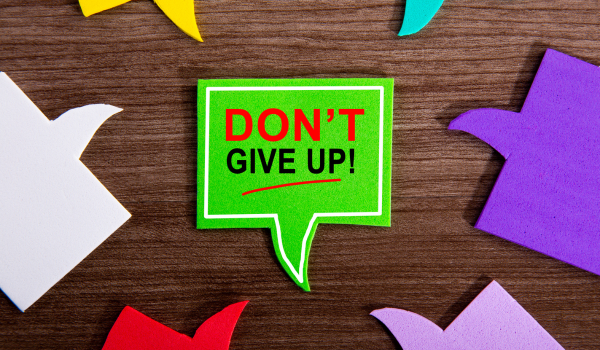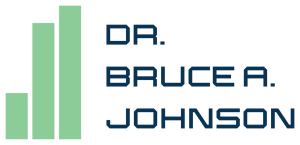Three Strategies to Help Students Develop an “I Can Attitude”
Teaching adult students is a rewarding experience as I have found them to be goal driven and motivated to learn something they can apply to their lives or careers. When they make an investment in a degree program it is usually done with an expectation it will be of benefit in some manner, whether immediately or upon graduation. When I am engaged and highly involved in the class, students believe they are receiving something of value – and this motivates me to perform my best as an educator.
I know it is natural for some students to lose interest in the course topics, discussions, or assignments over time. If I have established a good relationship with them, and I have been responsive to their requests and questions, I am able to help keep them engaged during times when they are not feeling highly enthusiastic. There are also going to instances when students struggle with aspects of the class that should seem self-explanatory or easy to understand. For example, I have watched students get sidelined with writing assignments when they simply cannot think of a starting point or topic to begin writing about, and their academic writing skills are so under-developed they reach a point where the only option may be to completely give up.
When students reach this point, they may express “I can’t” – either through their direct words or indirect actions. These students present a challenge for me as an educator; not for me to question my career choice, rather it challenges me to be a better educator and help these students succeed.
I know this form of expression represents their frustration and there is an underlying issue which must be addressed. While I may never know the exact cause of the issue, I must try to help turn the phrase “I can’t” into “I can” or at the very least, turn it into “I will try” and encourage them not to give up.

How Students Express “I Can’t”
Students may express “I can’t” several ways without stating those words. Using a written assignment as an example, students have told me what they submitted is the best they can do, they worked hard and should have earned an “A” letter grade even though the requirements were not fully met, and they put in the minimum effort needed because that is all they know how to do. In other words, they are stating they cannot do better because they either do not know how to perform better, they were not encouraged to do so, or they have performed in this manner long enough that it has become a matter of routine.
There are also other indirect methods in which an “I can’t” statement may be expressed. You can tell students have this mindset when their performance begins to decline with class discussions or assignments, you find mistakes are repeated even when helpful feedback has been provided to them, or they are starting to miss assignment deadlines.
For any educator, it may be difficult to determine if the reason for any of these issues is a matter of “I can’t” or “I won’t” – or if there are any other underlying causes. What makes these situations even more challenging is that students may not be very receptive or open to receiving help, once they have reached this level of frustration.

Regardless of the reasons, direct or indirect statements of this nature may be an expression of “I can’t do better than this right now” – until someone helps them to “do” otherwise or encourages them change their frame of reference. You do not have to know the actual reasons why help is needed for your students; you only need to acknowledge they are struggling and then try to help them.
Consider Your Perspective as an Educator
Any time you have students who are no longer able to realize their full potential, and you sense a lack of resilience when they are faced with challenges, it is helpful to first conduct an internal self-assessment of your expectations. For example, are you familiar with class discussions and assignments, and what should constitute a strong level of performance from your student? You have read responses and papers long enough to know what constitutes marginal, acceptable, and outstanding work on the part of your students.
However, if you have been working with those same learning activities long enough that your personal tolerance level for what you consider to be subpar responses and papers may be quite low now. You may have reached a point that you expect all students to make an above average effort, which may not be possible for all students to achieve.
For example, the best effort a student puts in may only be an average discussion response or written paper. That is their best, until they learn how to perform better with time and practice. This is the reason why it is helpful to re-examine your expectations, to determine if you expect too much from students, or if you can do more to help them reach their full potential.

Helping Students Develop an “I Can” Attitude
Whenever a student expresses “I can’t” to you in some form, either directly or indirectly, you should begin with a diagnosis to determine if it is a matter of “I won’t”, “I don’t know how”, “I’m not sure where to begin”, “I’m uncertain I can”, I am unable to find resources”, “I need help but I do not know how to ask for assistance”. In other words, look beyond the initial statement or what you believe the reactionary condition may be to determine if the underlying cause can be ascertained as you can better assist the student when you address problems rather than symptoms.
Whether or not you can learn about the underlying issue, you can still attempt to work with your students to help lessen their anxieties and change both their perspectives and outcomes. The following are strategies you can implement to meet this goal.
Strategies to Assist Students: The most important starting for working with students who seem unable to complete a task or activity is to ensure you are approaching your response to them from a position of empathy and genuine concern for their academic well-being. They will be able to tell from the perceived tone of your voice, along with anything you post in an online classroom or send by email, whether you are going through the motions or truly care about them. Your attitude also determines the amount of effort you will put into trying to assist them, and how willing you will be to try to find solutions for them.
Strategy #1 Immediate and Direct Contact: Often when I worked with faculty in my role as faculty development specialist, I recommended they offer one-on-one contact with students through an outreach method such as an email. However, when a student has reached a point where they are stuck – waiting for a reply and attempting to schedule a meeting can take time and further escalate their frustration.
One approach I’ve used is to contact the student immediately by phone as most of my classes have been taught online. If I am unable to reach the student, I will leave a detailed request and provide times when I am available, making a genuine offer of assistance. I also add the student’s name to my calendar, and check on them again, to ensure I have received a response and if not, I will continue my direct attempts. Some schools I worked for only want communication to occur through the learning management system. If that’s the case, I use messaging for contact. I can also set up a Zoom meeting for a one-on-one discussion.

Strategy #2 Consider the Student’s State of Mind: Whenever a student appears to be frustrated, or they are unable to meet any of the course requirements, they are not going to have a positive frame of reference and it may extend towards you as their instructor. What I never want to do is to push back at the student or argue with them about the issue they are concerned about and instead, I will acknowledge their concerns as being valid and express interest in resolving them.
Even if the reason why they cannot complete a task is invalid, there is something involved that has created a barrier and this is what I want to help them get past somehow. The more I can work with students, the more they will be willing to work with me.
Strategy #3 Provide Immediate Assistance: Another helpful strategy is to provide assistance when you respond to them, rather than wait until you can speak with them. As an example, if I am providing feedback for a paper and I notice the same errors are being made from week to week, and I have provided detailed feedback before, I will write a personalized message with my notes to the student that includes a list of recommended resources and an offer to speak one-on-one. I can also utilize the same approach for an online class discussion, if I read continued minimal responses.
I can post a general classroom announcement and offer tips and resources. I can also contact the student, request a time to speak with them, and ask for their feedback first about class discussions to gauge their perspective before I try to assess what I believe the issue might be. If they believe they are meeting the necessary requirements, I can discuss strategies for creating substantive and engaging posts. The purpose of these strategies is to be proactive and develop a connection with my students, which goes beyond just sending an email asking to speak with them.

Students Who Cannot Progress
It is not uncommon for students to experience sticking points as they progress through a course. If they can be resilient and persist on their own, they will find a way to resolve any challenges encountered – sometimes with and without the help of their instructors. But when students remain stuck, and they cannot progress any further with a task or learning activity, this is when they are likely to express their inability to complete the requirements either directly or indirectly to their instructors.
As an educator, you always have a choice as to how you will approach these students. You may allow these students to continue and expect or hope they will figure it out on their own, you may demand compliance, or you may choose to empathize with them and provide assistance. Students will be more likely to discover their ability to resolve challenges experienced when they change their perspective about the learning process.
This is something you have an ability to influence through any action or inaction taken when you discover they are struggling. Changing “I can’t” to “I can” will take some effort, and I know the work of an instructor already takes significant time; however, the result for your students is a renewed sense of accomplishment, self-belief, and self-worth. One of the most important academic lessons any student can learn is the power of the words “I can”, as a result of your encouragement, empathy, and willingness to spend time with them.

About Dr. Johnson
Dr. Bruce A. Johnson has 35 years of experience teaching and training adults. The first half of his career was spent in the field of Corporate Training and Development, with his last role as Manager of Training and Development.
Then in 2005, he made a transition into the field of distance learning. Over the past 18 years, he has been an online instructor, Faculty Development Specialist, Faculty Director, Faculty Development Manager, and Dissertation Chair.
Dr. Johnson is also an inspirational author, writer, and educator. His life mission is to teach, mentor, write, and inspire others. He has earned a PhD in Postsecondary and Adult Education, a Certificate in Training and Performance Improvement (TPI), a Master’s in Adult Education, and a Master of Business Administration (MBA).
As a scholar practitioner, Dr. J was published in a scholarly journal, and he has been a featured presenter at an international distance learning conference, along with presenting at three faculty conferences. He has also published over 230 online articles about adult learning, higher education, distance learning, online teaching, and mindset development. Dr. J published three books related to higher education, including two about online teaching.
Getting Down to Business: A Handbook for Faculty Who Teach Business.
Transform Adult Education: Expert Teaching Strategies for Educators.
Transform Online Teaching: Expert Strategies and Essential Resources Every Educator Needs.
Come join Dr. J’s new group, Motivation for Transformation:
• Any time of the day, visit this group to find your source of motivation, to be inspired and more importantly, have your mindset transformed: Motivation for Transformation
Dr. J offers transformative resources:
Please visit the Books page and Store page for transformative resources: Dr. J’s Books
You can also find Dr. J on the following social media sites: Instagram



